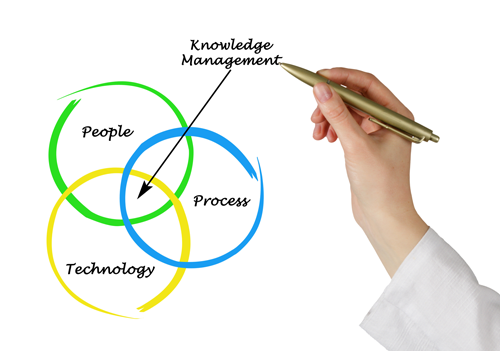What is ROT content and why can it kill your business slowly?
Storage is cheap, search functions work well, and content creation has never been easier. Or are they? Your teams keep creating content and storing...

Spending time searching through multiple platforms trying to locate that key piece of information required to keep a project moving is one of the biggest productivity issues facing employees and organizations. Fortunately, in the modern era, we are equipped with ample technology and tools to solve this problem, and the platforms would have you believe that it is as easy as pressing a button. Unfortunately adding new tools without proper planning and implementation can result in an increase in lost productivity and expense.
Taking an approach that is focused on optimizing findability is one of the best ways to solve these problems, and more. Working through the following four phases we can see how improving the fundamentals by improving findability affects many aspects of the business. It is reported that knowledge workers spend 2.8 hours a week trying to find the information required to perform their job.1
Knowledge management, or content management, is critical to better customer service, employee experience, and improving business decision- making. A knowledge management system’s output is only as good as the quality of the input. Content should be designed to maximize the features of modern search platforms for efficient findability.
Phase 1: Analyze and understand the content ecosystem
The first phase is an analysis of the existing content ecosystem. Taking a deep dive into how content is used and perceived in an organization—through conversations, surveys, focus groups, and analysis of complaints and tickets—reveals common issues and gaps that need to be addressed.
It also helps define some user personas, identify their pain points, their challenges finding content, their challenges with the content, the types of content they require, and the formats or channels they need to use to access the content.
Next, we make projections of how much content is expected to be required in the future and the tools or software needed to manage it. Evaluating the content ecosystem, how it flows, access portals and friction points can also reveal areas for improvement.
Finally, you should outline budget considerations, business needs, and constraints moving forward so that a content strategy can be developed within these parameters.
Phase 2: Create a content strategy
Developing a content strategy helps organizations design a knowledge management system that delivers the right content to the right people at the right time. By connecting user needs with business goals, 'outcome-driven' content can be delivered at the right time across multiple channels.
The information architecture focuses on planning and organizing information. Information architecture is the blueprint for the content modules. It defines how content libraries will be structured and presented to users so that information can be efficiently retrieved. It aligns a logical structure to the way the user thinks and works, creating more intuitive search abilities supported by metadata and taxonomy.
At this point, you have a roadmap for improving the findability of information for your organization through a content strategy. Next, it is time to put it into practice.
Phase 3: Implement the right strategy and tools
Implementation involves processing the content, building the ecosystem, and connecting the existing infrastructure. Where the content strategy is the design, the implementation phase is where the building happens.
Content must be processed to be effective in the new system. Legacy content must be updated and overhauled to meet the needs of a digitized workforce. Content must be vetted and curated for accuracy and relevancy, and new content may be required to fill in gaps. All this content requires metadata to make it easy to organize and find.
Next, you will want to make sure all the tools and platforms that make up the ecosystem are in place, connected, and working. This may include integrating new tools with existing ones, and ensuring the content is available in formats compatible with the systems and user needs.
While organizing content to make it easier to find sounds like a folder and drive clean-up, you can see how introducing a content strategy will be more effective overall, leading to higher productivity and lower costs.
Phase 4: Monitor, Maintain, Sustain
This phase is all about sticking to the plan and spreading the good word! That includes continuous assessment of the use of information assets, gap analysis, and retirement of outdated assets. Monitor the workflows for content creation and maintenance, such as content lifecycles. Make sure to document the knowledge management and change management processes. Ensure continuous training and refresher programs are available, especially for new team members or ones that may be transitioning to new roles. Form cross-functional advisory groups to oversee the content management strategy, tools, and processes so that the information management system is not skewed in favour of any one department; rather it stays relevant across the organization.
Finally, developing a training program is highly recommended. This is particularly important to ensure that the same processes are followed every single time for creation, review, publishing, and accessing content. Without proper training, organizations can quickly find themselves experiencing productivity paralysis with teams overwhelmed by unorganized information. With proper training, a solution-focused culture of trust and process is possible.
Finding your way
As the amount of data and information available continues to increase at an exponential rate, while time is increasingly in short supply, improving the findability of content in your organization pays off in a big way.
By applying the four-step process of a content strategy, new content will be created with metadata introduced from the beginning, existing content will be evaluated for purpose, updated, and enriched. Content will be properly formatted for its application. Users and customers enjoy an improved experience and can resolve their concerns without the added frustration of waiting for information or receiving outdated information. If you are ready to improve the user experience, productivity, and the bottom line, then consider upgrading the findability of your organization’s content.
1 https://www.apqc.org/blog/km-makes-knowledge-workers-more-productive-and-less-stressed-out

Storage is cheap, search functions work well, and content creation has never been easier. Or are they? Your teams keep creating content and storing...

Imagine walking into a library and finding books with no titles or apparent organization. Or a grocery store with no labeling on the food packages or...

The first step to closing the gaps is to acknowledge that they exist. Streamline your organizational knowledge, making it accessible and actionable...